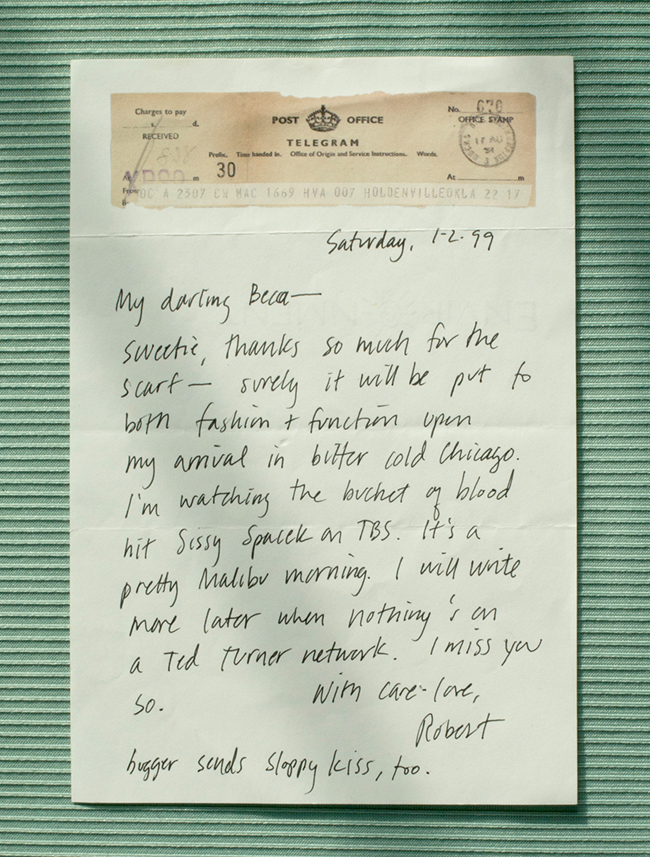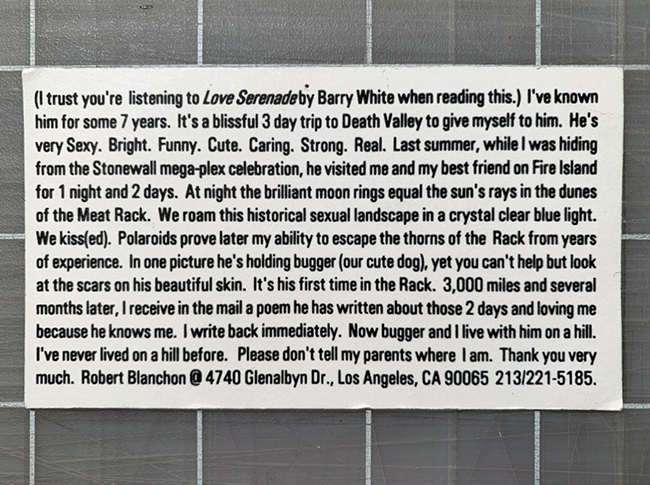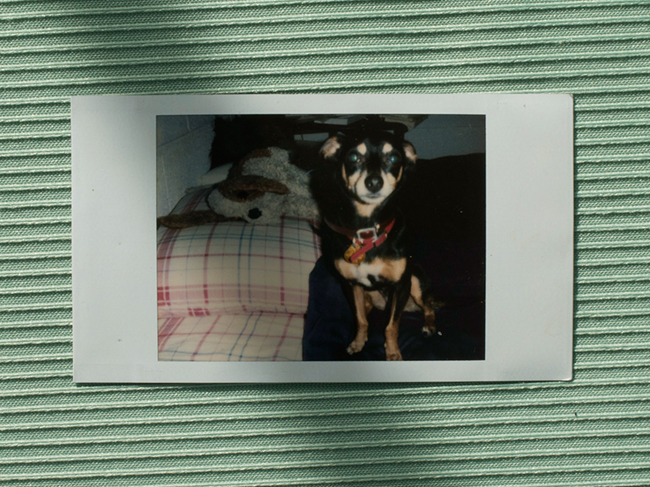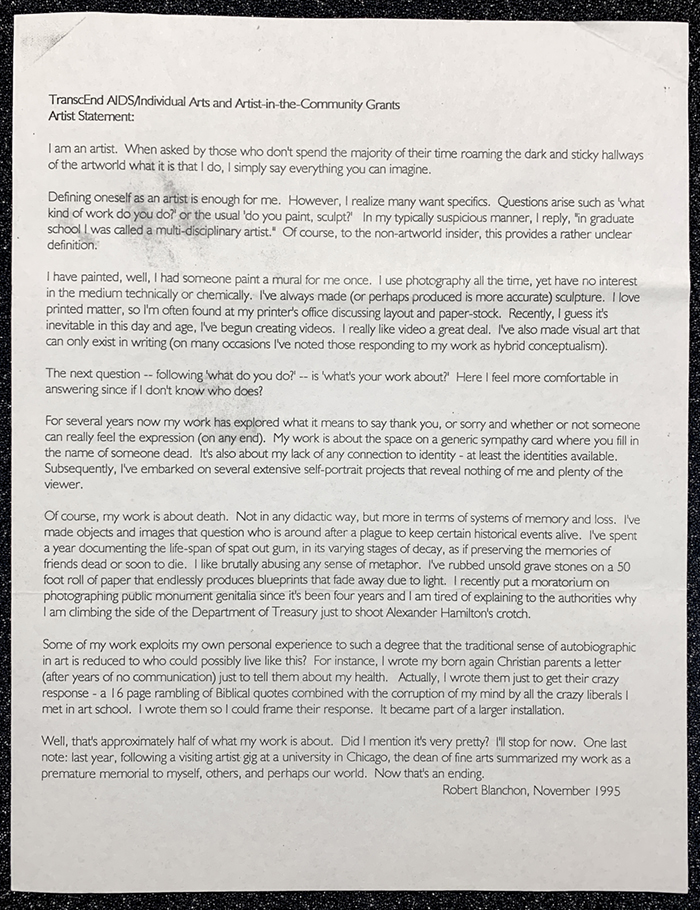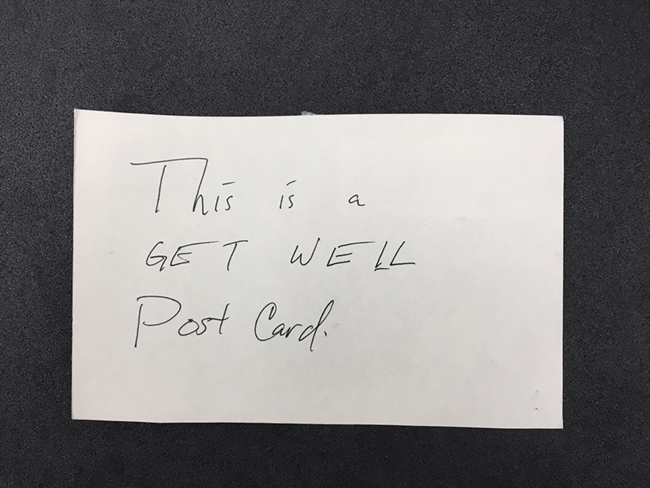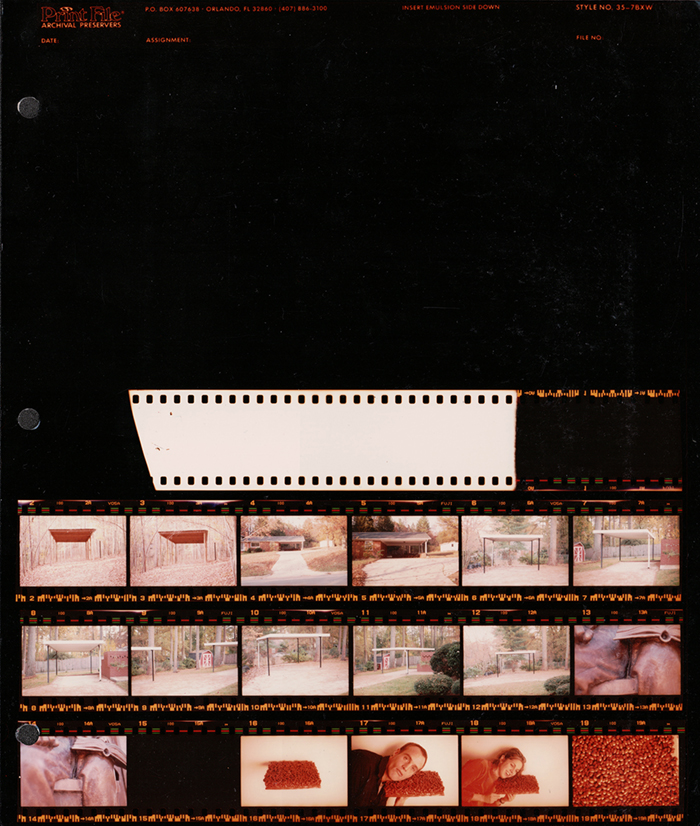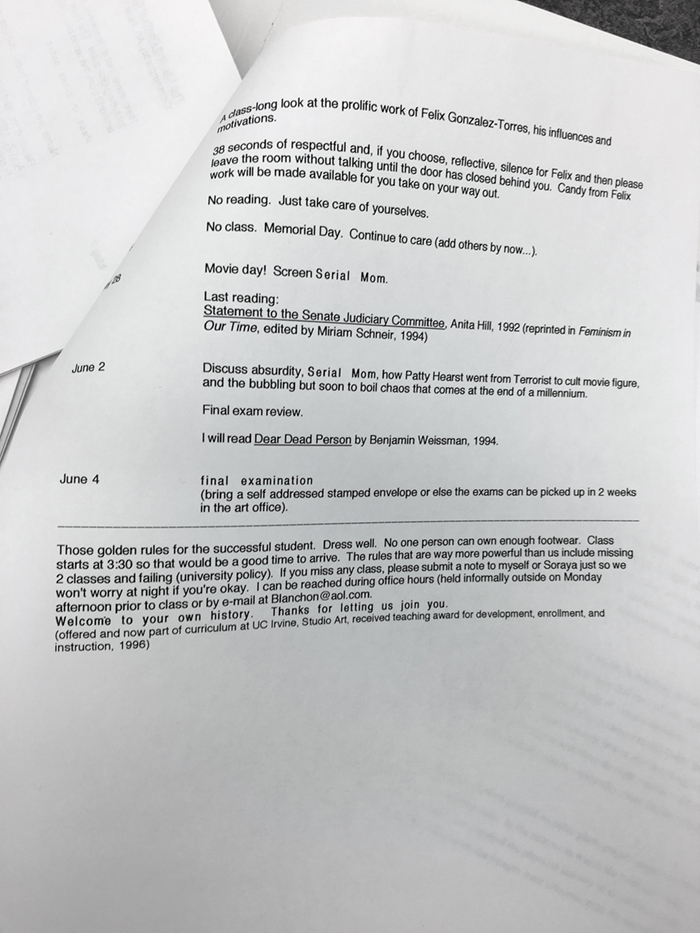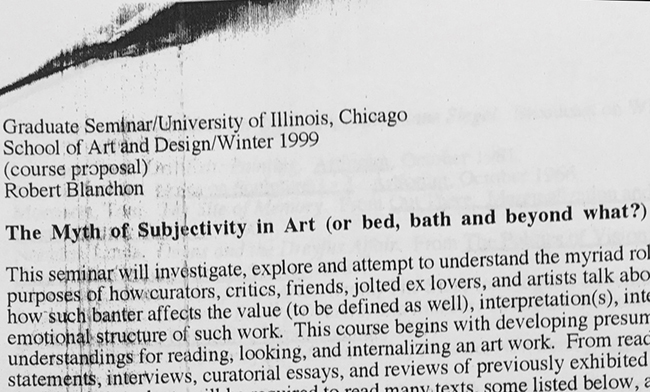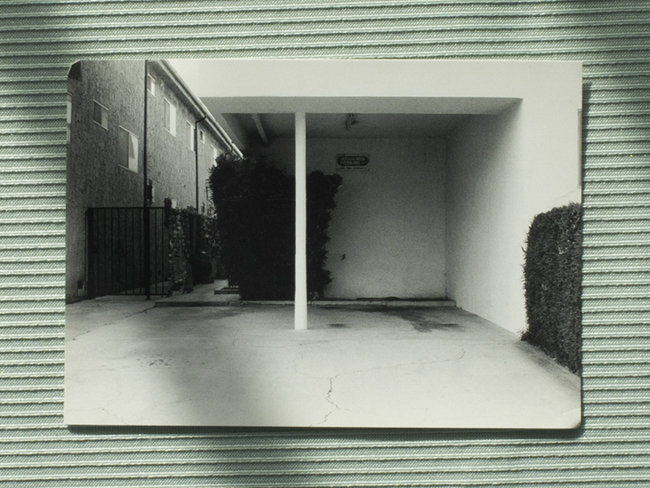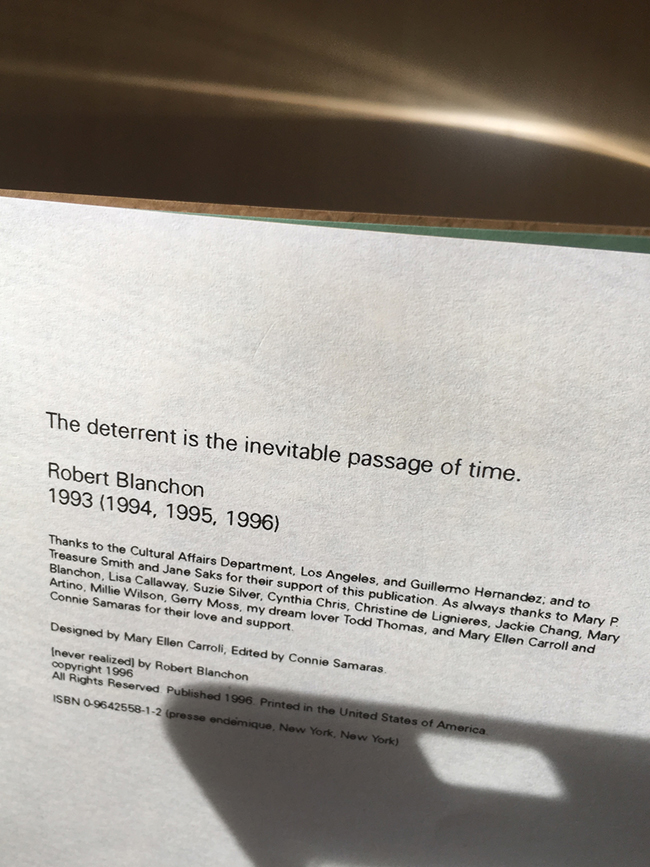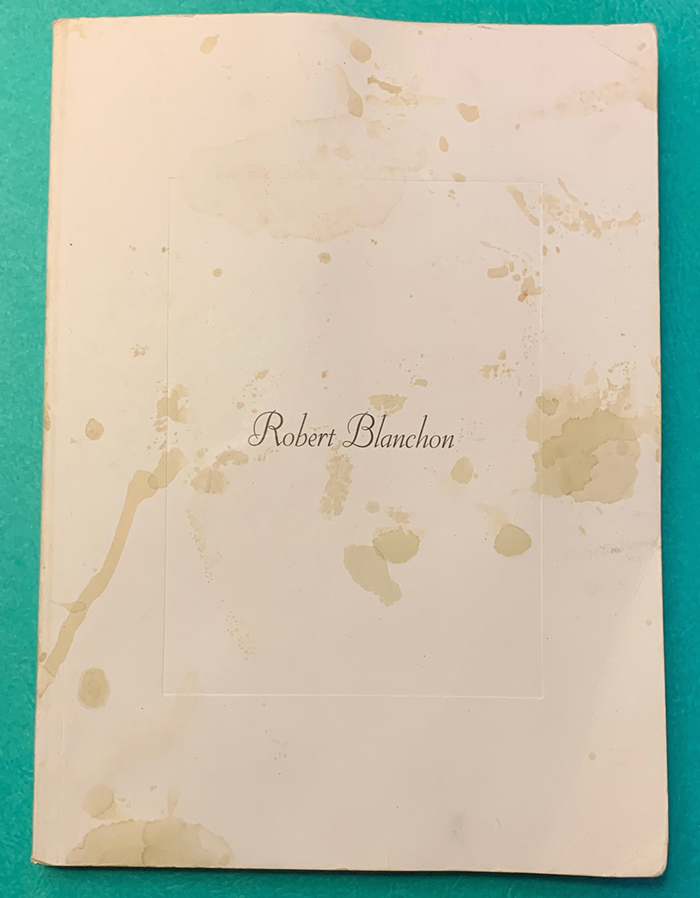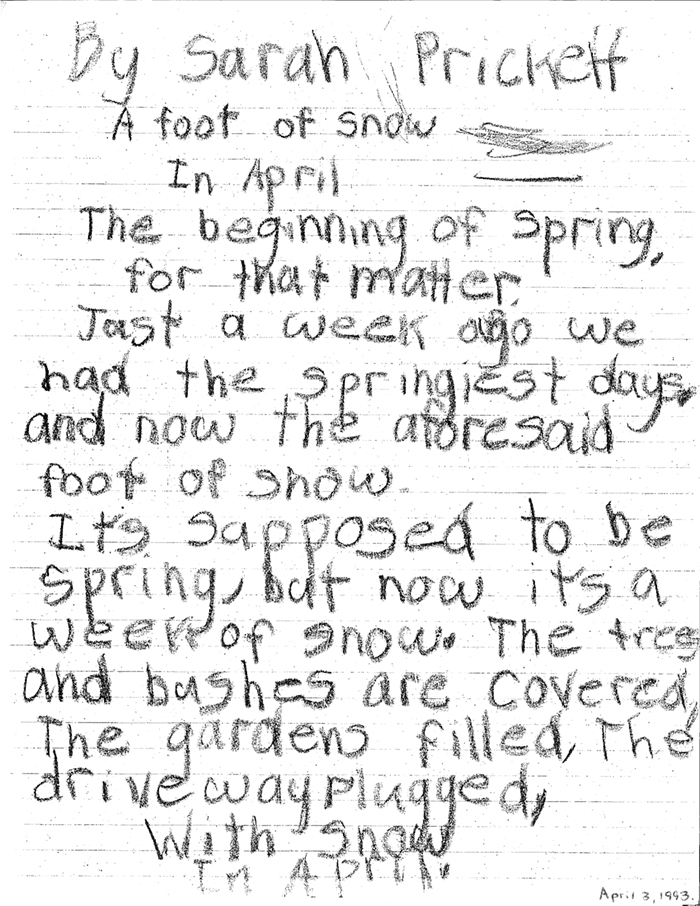MAREN HASSINGER [NOMINATED BY SENGA NENGUDI]
Friday, May 15th, 2020A LONG FRIENDSHIP
In 1975, I had a storefront studio in mid-town Los Angeles a few miles from the studio that Maren and her husband Peter were living in. I had an idea for a performance piece choreographing human bodies into abstract sculptures and photographing them from above. I knew Maren was a dancer and sculptor so I thought she might be interested in being one of the performers.
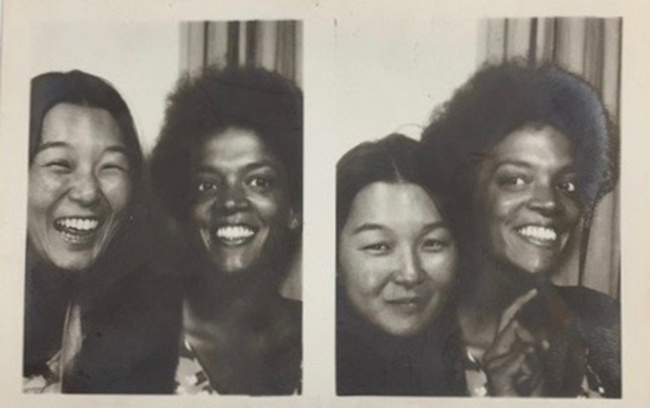
Photo booth snapshots of Joyce and Maren, 1975
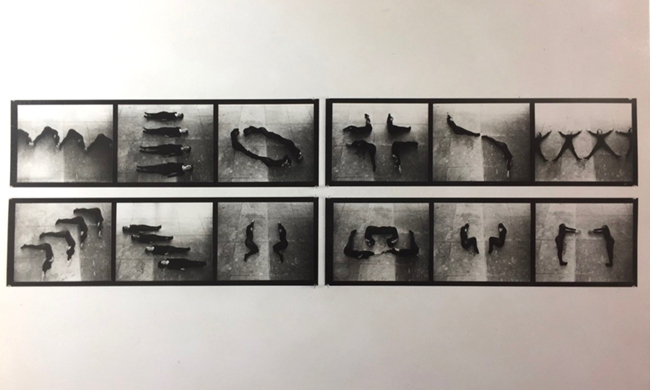
Photograph of Configurations, photographs by Joyce Hayashi, 1975
Most of our time in those years was taken up with art, but I also remember summer days
swimming in her mother, Helen’s, pool and grilling food outdoors with friends. Maren’s
daughter Ava was born in 1986 and I became her godmother.
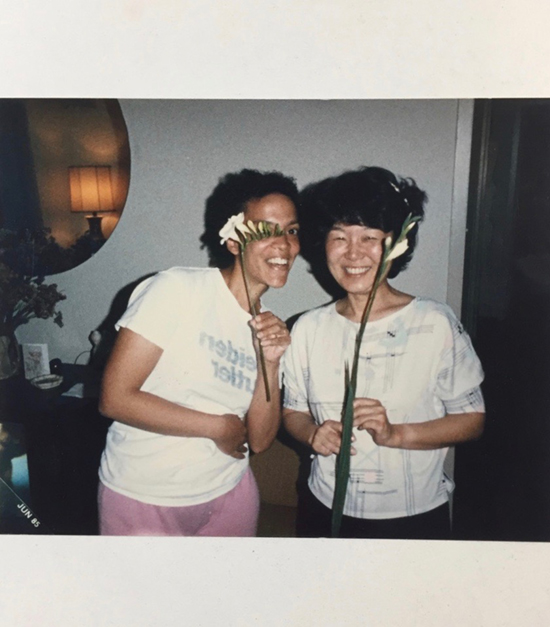
Photograph of Maren and Joyce holding flowers, 1985
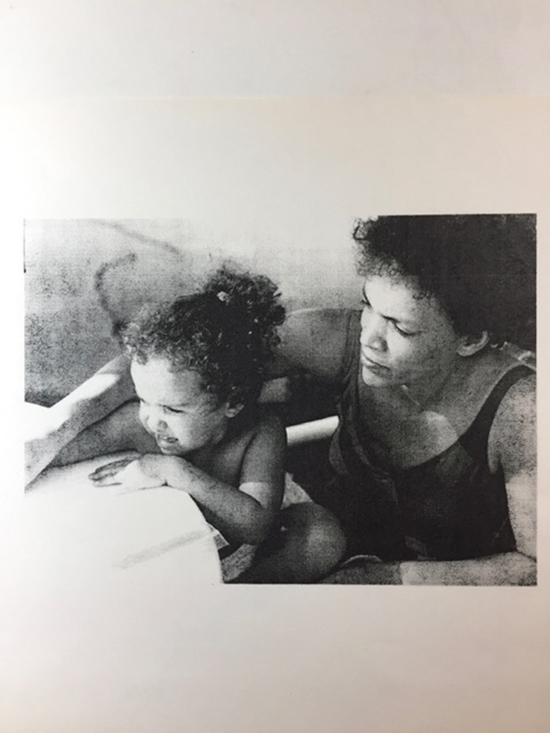
Photograph of Maren and Ava, photo on paper, Joyce Hayashi, 1988
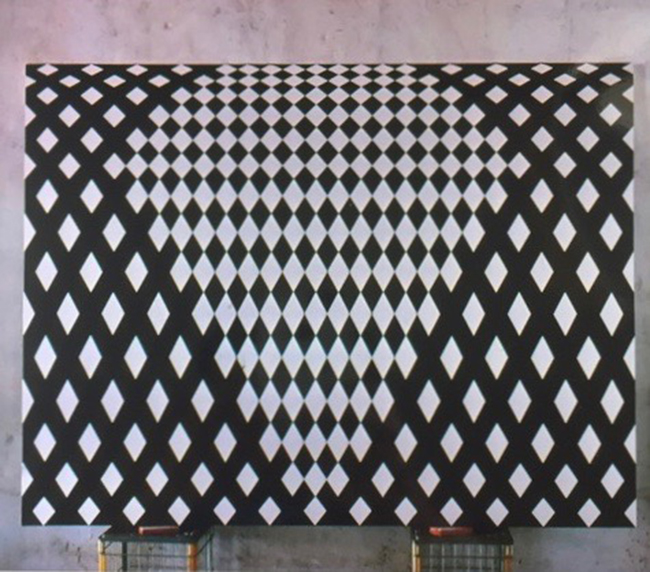
Photograph of Diamond, painting, 1985
In January 1993, my mother, who had always cared for my disabled younger sister Doreen, suffered a severe stroke. Suddenly, I found I had to move out of my studio to care for them fulltime until my mother recovered. I had no notion of how long this would be. As it turned out it lasted for 24 years.
By converting a patio/cookhouse behind our house into a small studio, I continued to paint during those years. By then, Maren had moved to New York. We’ve stayed in contact for over three decades by phone and occasional visits to exchange ideas, share our lives and always to give each other support.
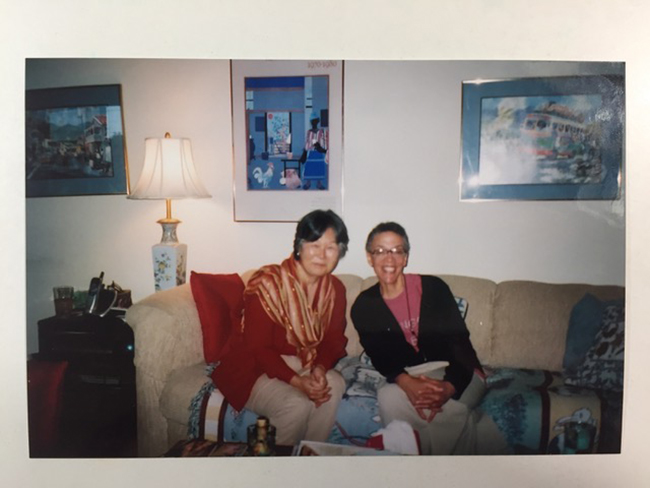
Photograph of Maren and Joyce sitting, 2009
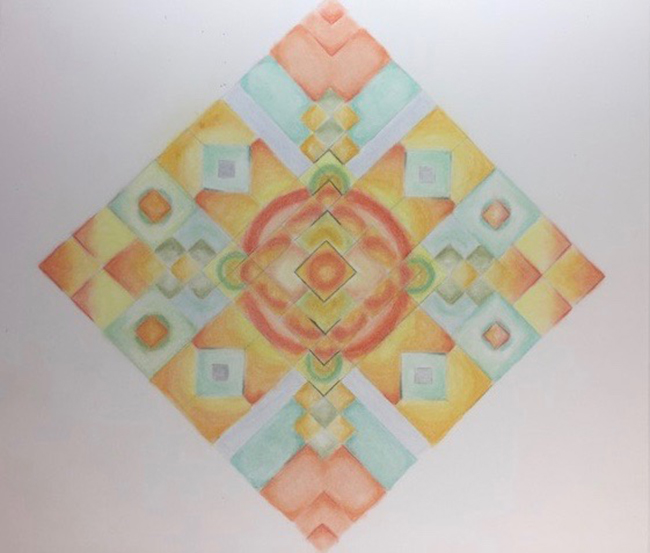
Photograph of Untitled drawing, 2007
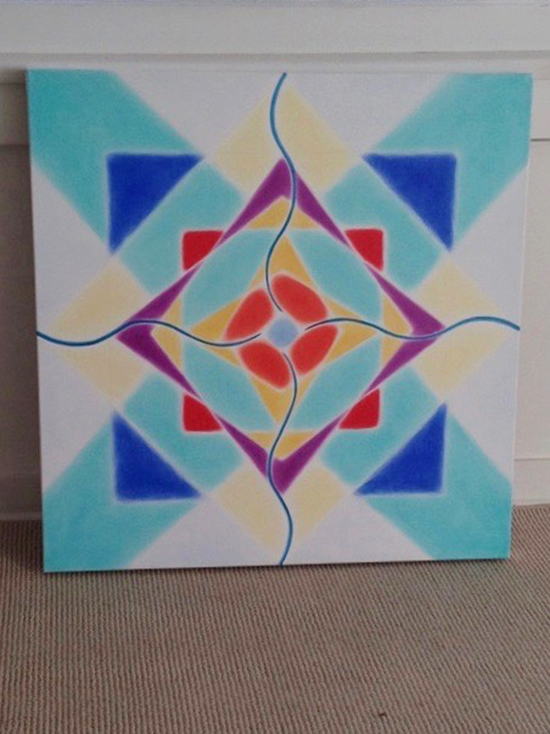
Photograph of Star #2, painting, 2014
Today, at 76, I am now able to turn my focus on making art again. The transition from caregiving has not always been smooth but I’ve found that my visual concerns have remained steady over the decades regardless of the conditions, as has my friendship with Maren.
– Joyce Hayashi
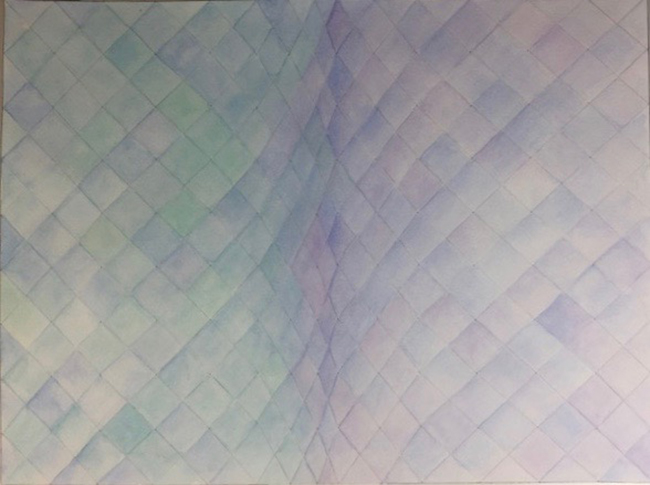
Photograph of Fold In, watercolor, 2020
Joyce Hayashi was born in Manzanar in 1943.
She has been my friend since the 1970s. We both find ourselves in the predicament of being artists and that’s the common bond. I remember one time when I was trying to paint these rocks grey. I had made them out of plaster and was having a terrible time finding the right grey. Joyce came to my studio and calmly and quietly mixed the perfect hue and I made many pieces using it.
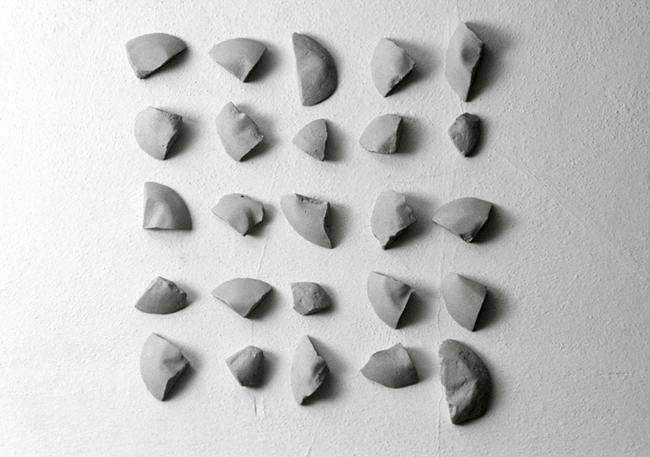
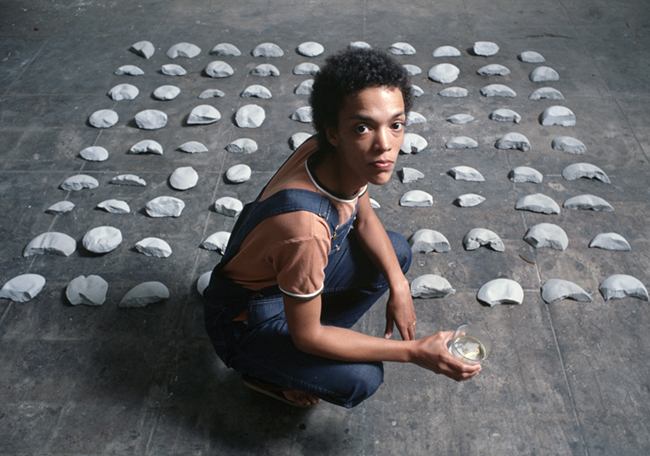
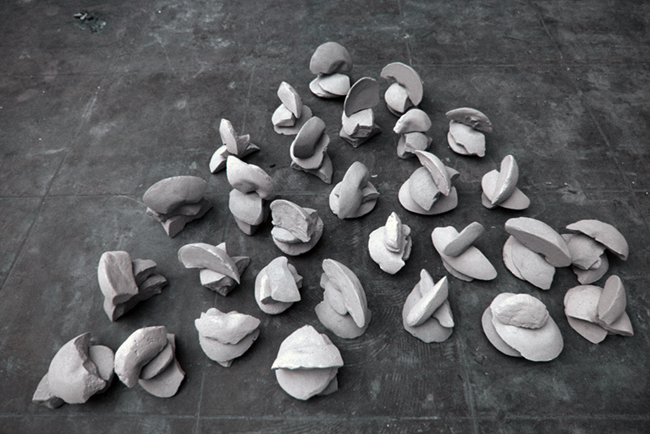
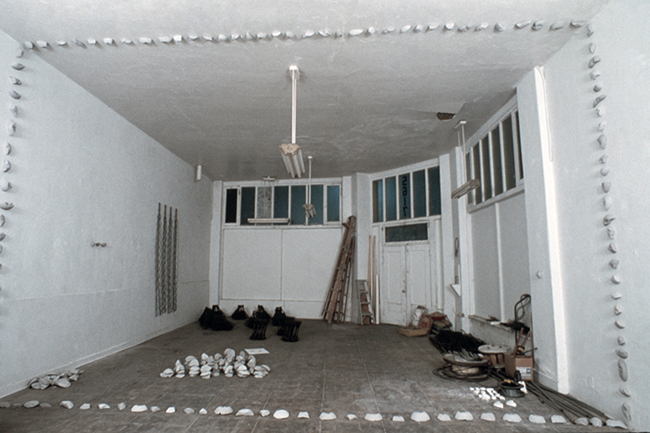
Photographs by Adam Avila, courtesy of Susan Inglett Gallery
She was generous like that. In 1986, she became my daughter’s godmother, which was a pretty difficult job because at that time I lived in New York City and she lived in Los Angeles. But there were lots of letters and phone calls and we remained close. It was around this time that Joyce’s life changed rather drastically, when her mother suffered an irreversible stroke and would be bedridden for the remainder of her life. Joyce became her caretaker. She also became her sister’s caretaker, as the family disease of muscular dystrophy claimed her. In the years of taking care of her mother until her mother’s death and then taking care of her sister, holding down jobs in administrative positions, and sharing a house with a fellow painter, she continued to pursue her art with tenacity.
Now that the familial obligations are behind her, she is making more art and forging new paths.
The reason why I’m so inspired by Joyce is that through this difficult journey, she managed to make art of beauty, sensitivity, and compassion. As Joyce is a practitioner of Buddhism, I see its philosophy of presence in all of her work. While taking care of her mother and sister, she never sought out commercial venues for her work. And yet, she continued through all of the difficulties, to make beautiful and meaningful paintings. And along with this exceptional work, we shared a fulfilling friendship of love and support.
– Maren Hassinger
—
Maren Hassinger was born in Los Angeles, CA, in 1947 and lives and works in New York. She was the Emeritus Director of the Rinehart School of Graduate Sculpture at the Maryland Institute College of Art in Baltimore, which she led for 20 years. During a career that has spanned more than four decades, Hassinger has explored relationships between the industrial and natural worlds in a practice that is both meditative and critical. Currently, her work is focused on exploring issues of equality.

